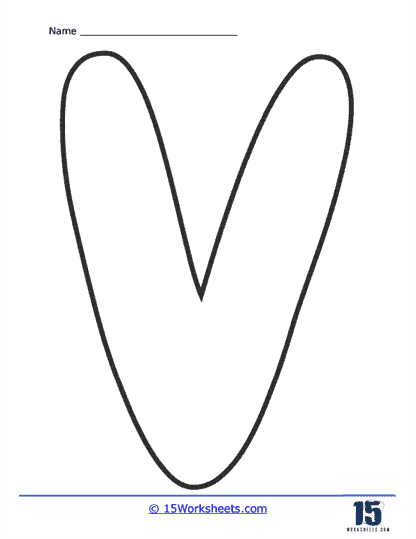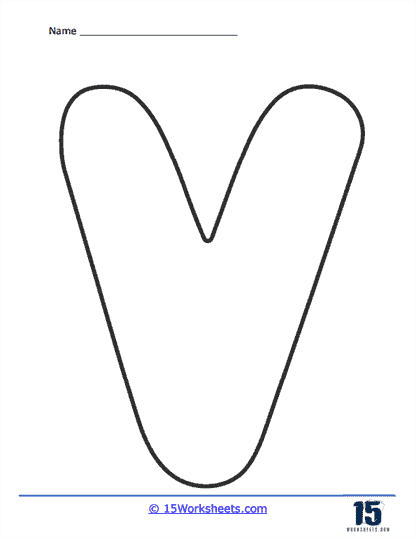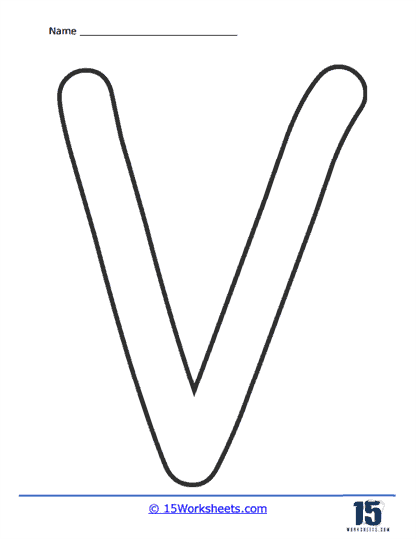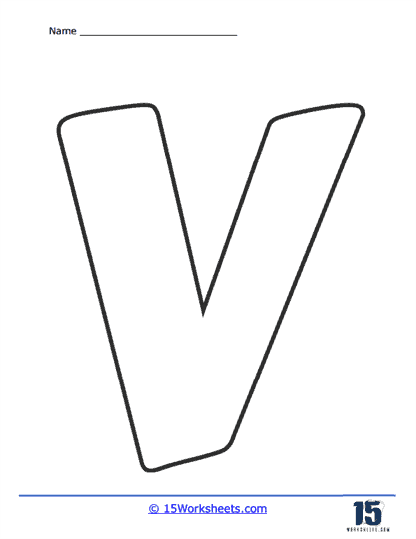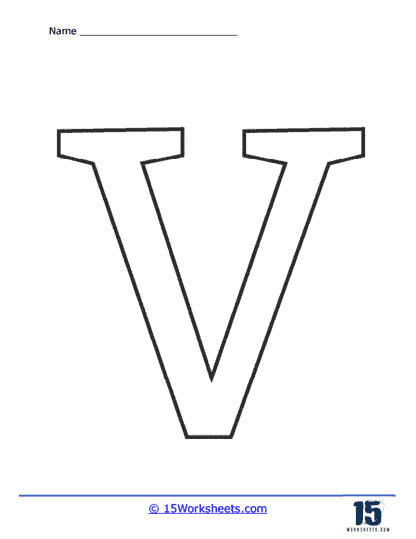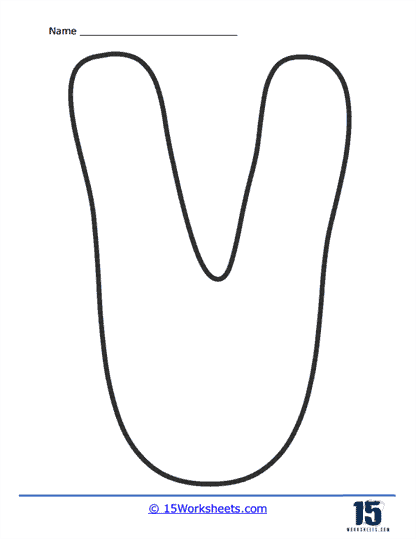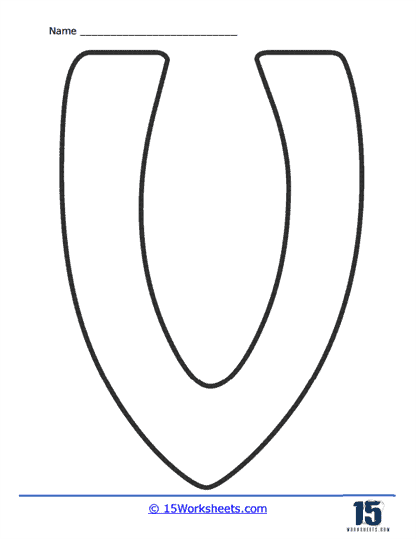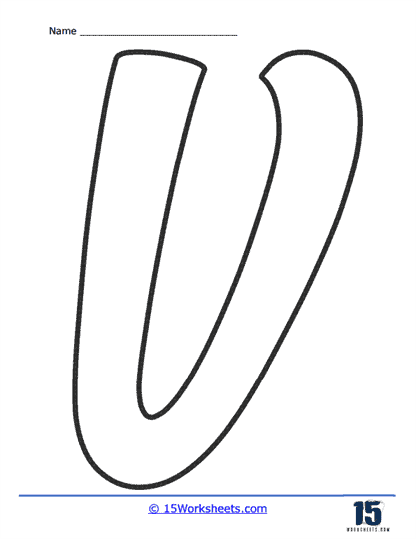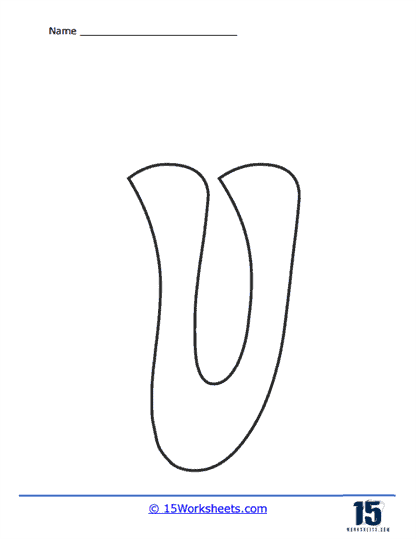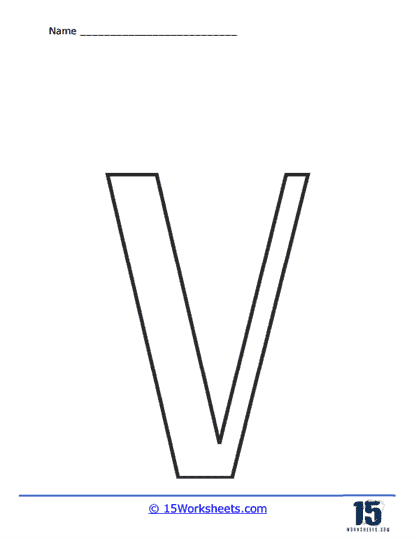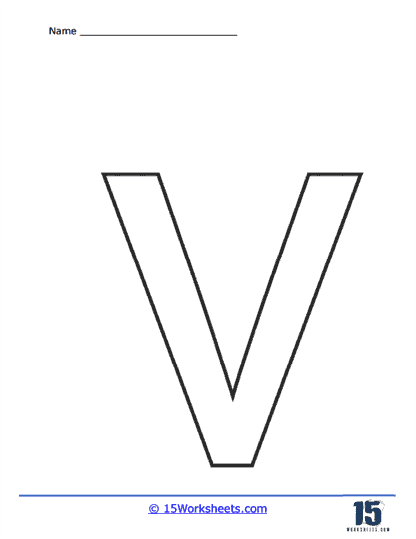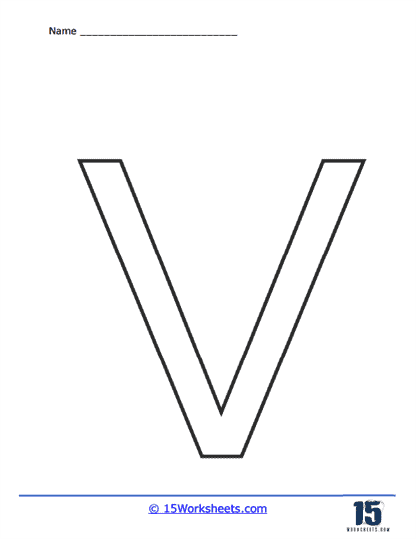Bubble Letter V Worksheets
All About These 15 Worksheets
Bubble Letter V worksheets serve as an essential foundational literacy skill. Recognized for their interactive nature, these worksheets transform what can sometimes be a mundane or even challenging task into an exercise filled with wonder and excitement.
Coloring and tracing bubble letters, specifically the letter V, present students with a unique opportunity to enhance their reading and writing abilities. One may wonder how the seemingly simple activity of tracing and coloring could harbor such profound educational implications. Firstly, the act of tracing these bubble letters acquaints young learners with the specific strokes, angles, and curves inherent to each letter, in this case, the distinctive angular structure of the letter V. As students guide their hands along these curves and angles, they’re not only visually recognizing the letter but also committing its shape and formation to muscle memory. Coloring further accentuates this process. As students fill in the contours of the bubble letter with color, they engage in a deeper level of interaction, reinforcing their connection with the letter. Moreover, coloring enhances their fine motor skills, which will prove instrumental as they delve deeper into the art of writing.
Integrating vocabulary into Bubble Letter V worksheets amplifies their efficacy. For the letter V, suitable words might include “vase,” “violin,” “van,” and “volcano.” These words can be woven into the worksheet both as written text and as accompanying illustrations. This dual representation serves to solidify the student’s association between the visual shape of the letter V and the sound it represents. It not only bolsters letter recognition but also enriches vocabulary, as students begin to relate the letter with specific words and objects in their environment.
However, the letter V, despite its seemingly simple structure, can be a cause for consternation among young learners. Why? The formation of the letter V necessitates a precise angular movement. Unlike rounded letters, which offer a degree of leniency in their formation, V requires a sharp, exact point where the two lines meet. Both the upper-case V and the lower-case “v” share this trait. The challenge lies in ensuring both sides are symmetrical, meeting perfectly at the bottom without overlapping or being too far apart.
Helping Students to Form the Letter V
Initially, having an adult guide the child’s hand to form the letter can be immensely helpful. This ensures that the child gets a feel for the correct angles and pressure points before attempting it independently. Using materials other than paper and pencil, like chalkboards, sand trays, or even finger painting, can make the learning process more dynamic. These mediums offer varied tactile feedback, helping students internalize the shape of the letter.
Crafting a short narrative or mnemonic can simplify the process. For the letter V, one might use, “Start at the top, slide down to the valley, and climb back up the other side.” Such narratives give students a visual and auditory cue, aiding in letter formation. Like any skill, the formation of the letter V improves with consistent practice. Regularly using Bubble Letter V worksheets for tracing and coloring can make the learning process smoother and more intuitive.

